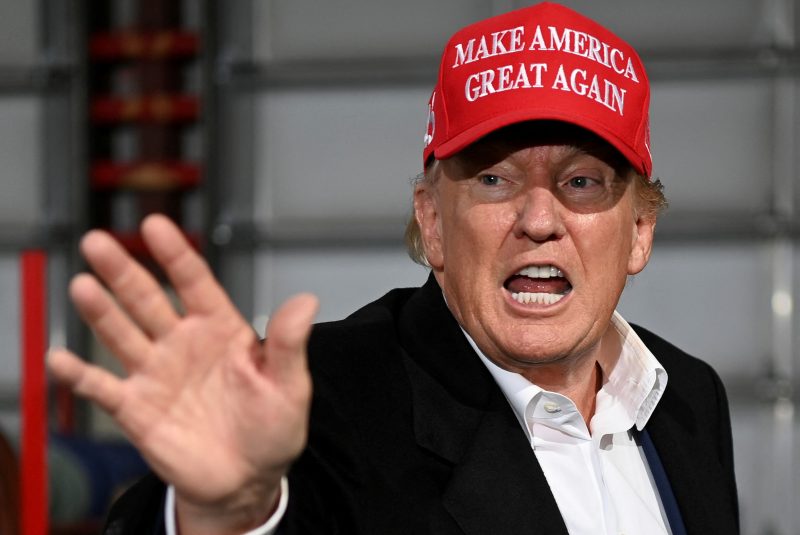
How a train derailment in East Palestine turned into a right-wing cause
East Palestine, Ohio, is in Columbiana County, a chunk of the eastern part of the state where it meets Pennsylvania and West Virginia. It is a rural area, more heavily White than the state overall and with fewer college graduates as a percentage of its population, fertile territory for Donald Trump’s brand of politics.
As, indeed, it was. The county voted more Democratic than the state overall in 2000, as did much of the blue-collar, northeastern part of Ohio. But it drifted to the right slowly and then all at once: 3 points more Republican in 2004, 12 points more Republican in 2008, 15 in 2012 — and then 33 and 37 points more Republican the two times Trump was on the ballot. Trump won Columbiana County by about 45 points in 2020. In the precincts that make up East Palestine, Trump earned five votes for every two cast for Joe Biden.
When Trump arrived in the town on Wednesday, it was therefore not surprising that he was welcomed with open arms. Trump was there to express support for the area after a massive train derailment on the evening of Feb. 3, an accident that led to the release of unknown quantities of toxic chemicals and a huge fire as authorities burned off some of what the train was carrying. The fire in particular generated apocalyptic imagery that slowly gained attention online — and, eventually, caught the eye of those on the right as a point of political leverage.
In an interview with Axios, Sen. J.D. Vance (R) — the native of suburban, southwestern Ohio who became a venture capitalist — described the situation in East Palestine as tailor-made for his and Trump’s shared brand of populist politics.
“The three of us, in our own ways, recognized instantly: This is fundamentally our voters, right?” Vance told Axios, referring to himself, the former president and Fox News host Tucker Carlson. “These are sort of our people.”
Vance explained the appeal: The disaster was a failure of both big business — the train operator — and the federal government. Their “wing of the party,” Vance said, is “very skeptical of each.”
This is framing, of the sort that politicians are wont to do. Vance is recognizing the opportunity for the skepticism that powers his own popularity, along with Trump’s and Carlson’s. By depicting the disaster as a failure of government and business — not difficult to do, given the evolution of the scene — the triad bolsters their own political rhetoric.
The tell comes in that first line: that he, Trump and Carlson “recognized instantly” the situation for what it was. In reality, each was slow to focus on what occurred in East Palestine.
The accident happened on the evening of Feb. 3. The Environmental Protection Agency began monitoring the scene the following day, installing air-monitoring devices and addressing polluted water runoff. That morning, Vance tweeted about the accident, saying that his team was “monitoring this situation.” His office didn’t issue a press release until Feb. 13, ten days after the accident. It was predicated on there being “many questions [that] remain,” instead of conveying to Ohioans the results of his team’s monitoring what was going on.
Carlson’s timeline was similar. A search of closed-captioning from his program suggests that he didn’t begin talking about the disaster until that same day, Feb. 13. His focus was on attacking Transportation Secretary Pete Buttigieg, a lightning rod who had started to come under fire for not mentioning the derailment. The Biden administration was indifferent, Carlson said, because their view was that the residents were “not our voters.”
Regardless of that rhetoric, this isn’t an “instant” response. Instead, it was very likely a reaction to the increased discussion about the disaster on social media, discussion that centered heavily on possible worst-case outcomes. The horrible photos and limited media coverage (at least on television) created a vacuum for conspiracy theorists and average users alike to speculate about what might be going wrong. Google search interest in “derailment” rose in the days prior and then surged on Feb. 13. On Feb. 14, cable news networks began covering the disaster far more, as well.
(Since it comes up a lot: coverage of balloon incursions over North America had already died down before attention turned to East Palestine.)
Trump — now running for president with Vance’s endorsement — was even later to the issue. His first social-media post about the derailment didn’t come until earlier this week. He’d spent most of February instead complaining about various investigations into his actions, disparaging Florida Gov. Ron DeSantis (R) and, last Friday, sharing various clips of himself throwing a football.
His first post about the disaster, incidentally, was to link a story in which he was given credit for prompting the Federal Emergency Management Agency’s decision to deploy to the scene. We should note, as Fox News’s Bret Baier did on Wednesday, that neither Trump nor his transportation secretary visited train derailment sites when he was president.
It’s also useful to note that, when asked on Feb. 15 about Vance’s claims of administration inaction, Ohio Gov. Mike DeWine (R) told reporters that he’d declined President Biden’s offer of assistance.
“The president called me and said, ‘Anything you need,’” DeWine said. “I have not called him back after that conversation. We will not hesitate to do that if we’re seeing a problem or anything, but I’m not seeing it.”
It’s easy to argue that too little is being done in any given situation, certainly. That provides an opportunity for those building political capital by casting the government as ineffective, as Trump, Vance and Carlson are invested in doing. Even if it takes a week or two to get to that point.
Vance’s comments to Axios raise another important question. If the residents of East Palestine weren’t “our voters,” would he have been their champion?
